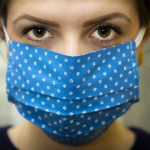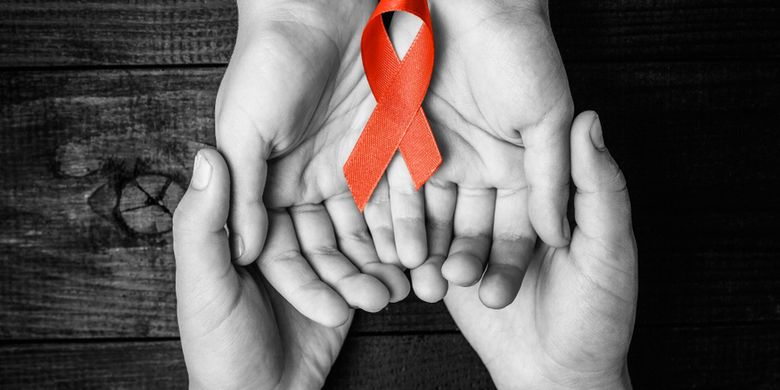By Julie M. Photos by Laurent P. Published March 27, 2021 at 7:30 p.m. Updated March 27, 2021 at 7:30 p.m.
While France is experiencing a curfew at 19, the incidence rate by department remains an indicator to be followed very closely to follow the evolution of the epidemic. Indeed, if initially only the departments which exceeded the threshold of 200 per 100,000 inhabitants had to take new measures to fight against the spread of the epidemic, in particular by implementing an extension of their curfew, today, the entire territory is concerned until the situation improves. We discover together the incidence rates of each department on Saturday March 27, 2021.
L’indicator to follow closely at the moment, it is the incidence rate of each department. Indeed, it makes it possible to estimate the share of people infected in each department and there is a corresponding number of people tested positive over the last 7 days out of 100,000 inhabitants.
Find below the incidence rate by department at Wednesday, March 24, 2021. We noted in rouge the departments for which the incidence rate is greater than 200 per 100,000, in orange the departments for which it is between 100 and 200 per 100,000. We put in vert the departments for which the threshold is less than 100 per 100,000. Not that these areas are considered safe, but for now they are not threatened by a breakthrough in the curfew.
The overall incidence rate in France at Wednesday, March 24, 2021 (consolidated data) achieved 350,40 or well above the alert threshold set at 50.
- 01 – Ain – Bourg-en-Bresse 290,4
- 02 – Aisne – Laon 426,8
- 03 – Allier – Mills 183,8
- 04 – Alpes-de-Haute-Provence – Digne-les-Bains 382,6
- 05 — Hautes-Alpes — Gap 336,5
- 06 — Alpes-Maritimes — Nice 431,9
- 07 – Ardèche – Privas 195,5
- 08 – Ardennes – Charleville-Mézières 304,3
- 09 – Ariège – Foix 168,0
- 10 – Aube – Troyes 516,6
- 11 – Aude – Carcassonne 166,1
- 12 – Aveyron – Rodez 232,1
- 13 – Bouches-du-Rhône – Marseille 409,1
- 14 – Calvados – Caen 217,9
- 15 – Cantal – Aurillac 110,6
- 16 – Charente – Angoulême 202,2
- 17 – Charente-Maritime – La Rochelle 142,8
- 18 – Cher – Bourges 257,4
- 19 – Corrèze – Tulle 234,7
- 2A – Corse-du-Sud – Ajaccio 160,7
- 2B – Haute-Corse – Bastia 127,8
- 21 – Côte-d’Or – Dijon 174,3
- 22 – Côtes-d’Armor – Saint-Brieuc 194,9
- 23 – Creuse – Gueret 50,7
- 24 – Dordogne – Périgueux 246,1
- 25 – Doubs – Besançon 344,8
- 26 – Drôme – Valence 266,1
- 27 – Eure – Évreux 432,8
- 28 – Eure-et-Loir – Chartres 357,7
- 29 – Finistère – Quimper 81,4
- 30 – Gard – Nîmes 353,7
- 31 – Haute-Garonne – Toulouse 234,4
- 32 – Gers – Also 136,3
- 33 – Gironde – Bordeaux 217
- 34 – Hérault – Montpellier 283,4
- 35 – Ille-et-Vilaine – Rennes 255,8
- 36 – Indre – Châteauroux 168,1
- 37 – Indre-et-Loire – Tours 285,6
- 38 – Isère – Grenoble 298,3
- 39 – Jura – Lons-le-Saunier 289,3
- 40 – Landes – Mont-de-Marsan 82,0
- 41 – Loir-et-Cher – Blois 270,6
- 42 – Loire – Saint-Étienne 340,4
- 43 – Haute-Loire – Le Puy-en-Velay 207,6
- 44 – Loire-Atlantique – Nantes 208,5
- 45 – Loiret – Orleans 247,8
- 46 — Lot — Cahors 136,3
- 47 – Lot-et-Garonne – Agen 162,6
- 48 – Lozère – Mende 340,8
- 49 – Maine-et-Loire – Angers 259,4
- 50 – Manche – Saint-Lô 168,5
- 51 – Marne – Châlons-en-Champagne 289,6
- 52 – Haute-Marne – Chaumont 254,1
- 53 – Mayenne – Laval 203,0
- 54 – Meurthe-et-Moselle – Nancy 280,3
- 55 – Meuse – Bar-le-Duc 305,5
- 56 – Morbihan – Vannes 166,8
- 57 – Moselle – Metz 292,2
- 58 – Nièvre – Nevers 390,3
- 59 – North – Lille 475,6
- 60 – Oise – Beauvais 510,5
- 61 – Orne – Alençon 312,7
- 62 – Pas-de-Calais – Arras 522,4
- 63 – Puy-de-Dome – Clermont-Ferrand 219,3
- 64 – Pyrénées-Atlantiques – Pau 79,6
- 65 – Hautes-Pyrénées – Tarbes 157,4
- 66 – Pyrénées-Orientales – Perpignan 199,0
- 67 – Bas-Rhin – Strasbourg 255,7
- 68 – Haut-Rhin – Colmar 168,2
- 69 – Rhône – Lyon 454,5
- 70 – Haute-Saône – Vesoul 179,2
- 71 – Saône-et-Loire – Mâcon 202,6
- 72 – Sarthe – Le Mans 294,0
- 73 – Savoie – Chambéry 298,5
- 74 – Haute-Savoie – Annecy 290,2
- 75 – Paris – Paris 575,1
- 76 – Seine-Maritime – Rouen 378,2
- 77 – Seine-et-Marne – Melun 675,8
- 78 – Yvelines – Versailles 542,7
- 79 – Deux-Sèvres – Niort 221,4
- 80 – Somme – Amiens 461,1
- 81 – Tarn – Albi 238,2
- 82 – Tarn-et-Garonne – Montauban 208,3
- 83 – Var – Toulon 397,4
- 84 – Vaucluse – Avignon 382,7
- 85 – Vendée – La Roche-sur-Yon 215,0
- 86 – Vienne – Poitiers 209,6
- 87 – Haute-Vienne – Limoges 175,3
- 88 – Vosges – Épinal 239,8
- 89 – Yonne – Auxerre 290,9
- 90 – Territory of Belfort – Belfort 221,9
- 91 – Essonne – Évry 571,2
- 92 – Hauts-de-Seine – Nanterre 507,3
- 93 – Seine – Saint-Denis – Bobigny 777,0
- 94 – Val-de-Marne – Créteil 664,3
- 95 – Val-d’Oise – Cergy-Pontoise 774,8
- 971 – Guadeloupe – Basse-Terre 101,4
- 972 – Martinique – Fort-de-France 136,9
- 973 – Guyana – Cayenne 42,3
- 974 – Reunion – Saint-Denis 127,3
- 976 — Mayotte — Dzaoudzi 75,1


 Covid: Jean Castex and Olivier Véran press conference postponed to 7 p.m.
Covid: Jean Castex and Olivier Véran press conference postponed to 7 p.m.
While new restrictions could be taken in several French regions, including Île-de-France, Prime Minister Jean Castex and Minister of Health Olivier Véran will hold a press conference this Thursday, March 18, 2021 at 7 p.m. The option of a reconfinement of Île-de-France for a period of 4 weeks, only on weekends, seems privileged at the present time, according to information revealed by L’Express. So what to expect We take stock.



 Covid: “the health situation is worrying”, the announcements of Olivier Véran this Thursday, March 11
Covid: “the health situation is worrying”, the announcements of Olivier Véran this Thursday, March 11
The Minister of Solidarity and Health Olivier Véran has just given a new update on the coronavirus epidemic, this Thursday, March 11, 2021 at 6 p.m., addressing among other things the worsening health situation in the three most affected regions, the Hauts-de-France, Provence-Alpes-Côte-d’Azur and Île-de-France, but also the impact of variants on health pressure, the evacuation of Covid patients and the acceleration of the vaccination. If the markers of the epidemic and the hospital tension continue to increase, “then we will take all the necessary measures to save lives”, underlines the minister.



 Covid: curfew at 7 p.m., what you need to know
Covid: curfew at 7 p.m., what you need to know
Since March 20, 2021, the curfew at 7 p.m. has been implemented throughout mainland France. What are the rules of this national measure? We take stock of what is authorized and what is not.



 Curfew in France at 7 p.m.: how long will it last? Emmanuel Macron reveals an estimate
Curfew in France at 7 p.m.: how long will it last? Emmanuel Macron reveals an estimate
Since mid-December, the French have traded confinement for the curfew. First between 8 p.m. and 6 a.m., the measure was brought forward to 6 p.m. before being postponed to 7 p.m. throughout mainland France since March 20, 2021 … but until when will last? Emmanuel Macron indicated this Monday, March 1, a new estimate.



 Coronavirus: curfew, wearing a mask, the amount of the fine in the event of non-compliance
Coronavirus: curfew, wearing a mask, the amount of the fine in the event of non-compliance
In France, as the coronavirus epidemic is accelerating, new restrictions have been put in place, including the curfew from 7 p.m. to 6 a.m. or the wearing of a mask depending on the area. So what penalties should we expect in the event of non-compliance?



 Curfew: the certificate of movement after 7 p.m. to download and print
Curfew: the certificate of movement after 7 p.m. to download and print
France has been subject to a curfew extended from 7 p.m. to 6 a.m. since January 16, 2021. Exemptions are however possible but limited. And who says curfew says return of exceptional travel certificates: 3 certificates are available to allow you to justify your exits. These documents can be printed, copied on plain paper or completed on a smartphone, in particular via the TousAntiCovid application.



 Coronavirus: isolation of positive cases strengthened to 10 days
Coronavirus: isolation of positive cases strengthened to 10 days
At the press conference of January 18, 2021, the Minister of Health Olivier Véran announced a strengthening of the isolation of positive cases: it therefore goes from 7 to 10 days.
–


